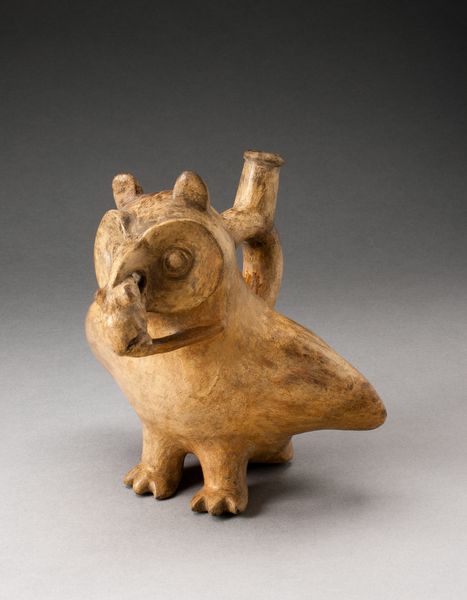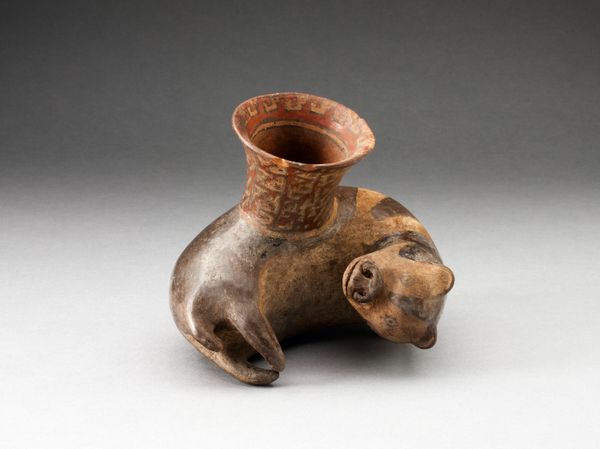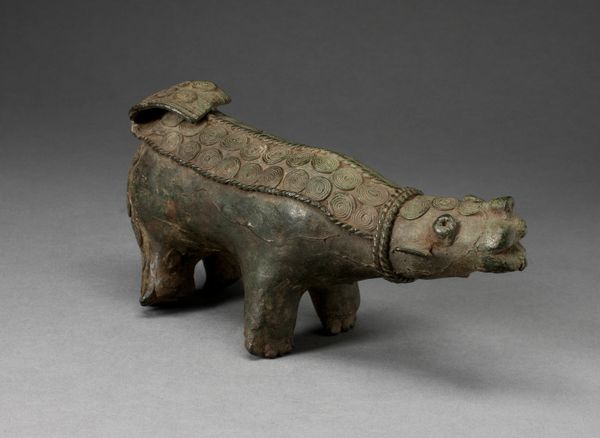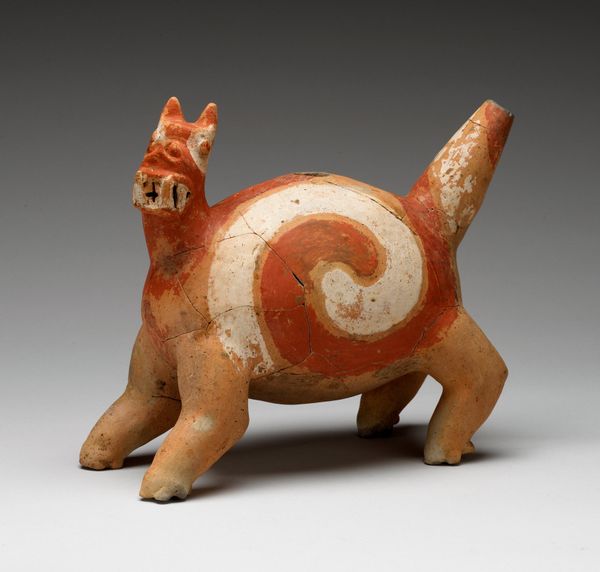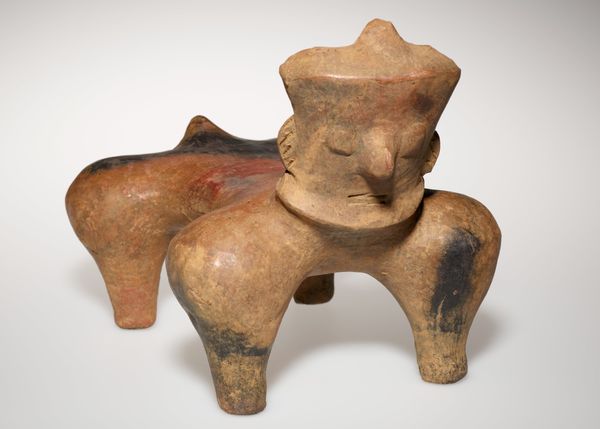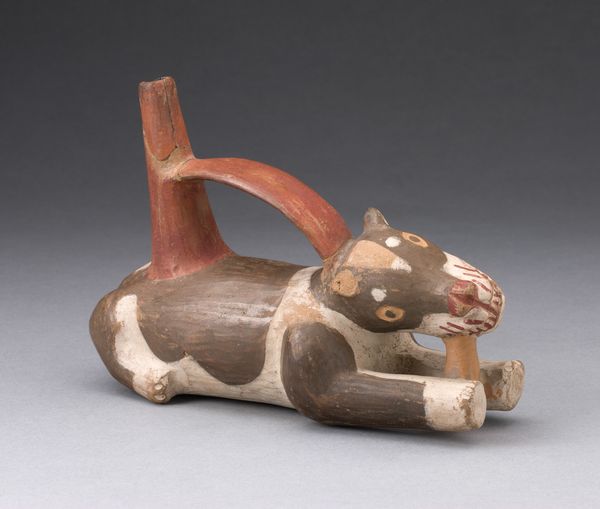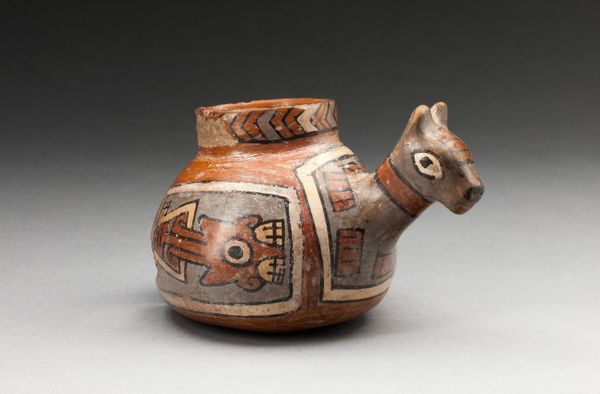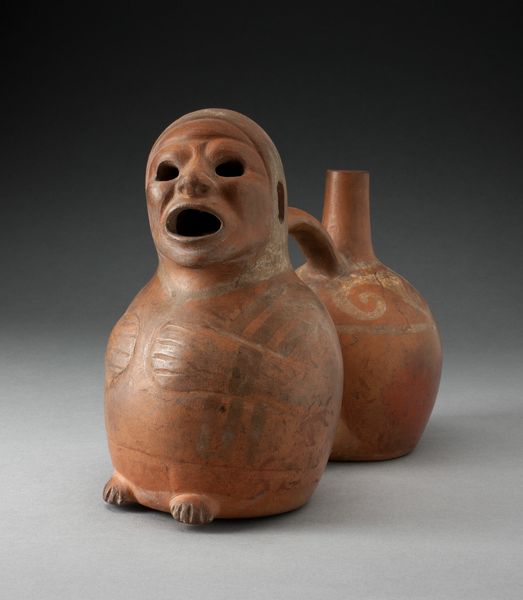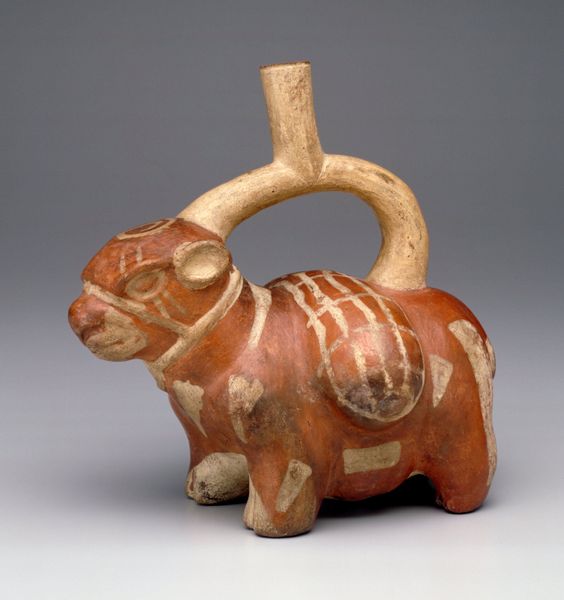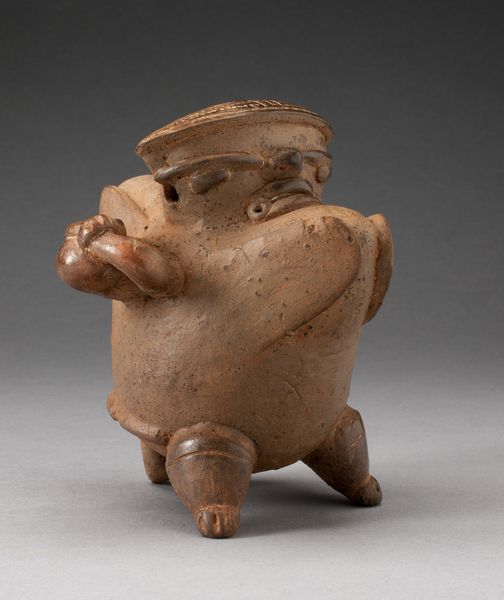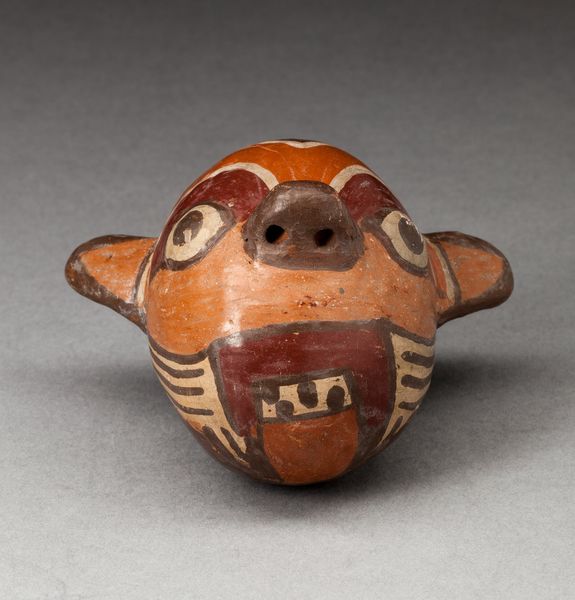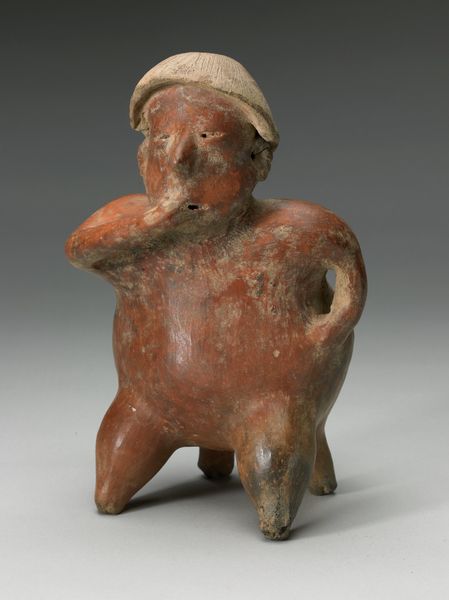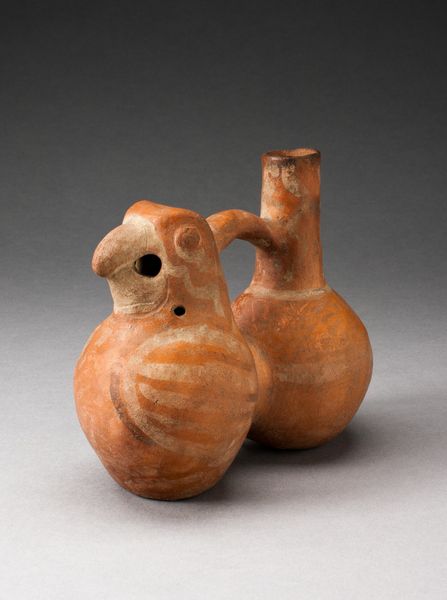
Vessel in the Form of an Animal with Four Legs and Long Tail c. 400
0:00
0:00
ceramic, sculpture
#
ceramic
#
indigenism
#
figuration
#
vessel
#
sculpture
Dimensions: H. 8.9 cm (3 1/2 in.)
Copyright: Public Domain
Editor: This charming ceramic sculpture, "Vessel in the Form of an Animal with Four Legs and Long Tail" from around the year 400, looks almost playful. The material itself gives it such an earthy feel. The speckled surface adds an intriguing textural contrast. What catches your eye when you look at this piece? Curator: What arrests my attention is the successful synthesis of function and form. Consider how the cylindrical opening disrupts the animal's dorsal plane. Its utility as a vessel does not detract from, but rather integrates with, the figuration. Observe, too, how the artist renders a believable quadruped, but with minimal surface modulation and a high degree of simplification, arriving at something potent. Editor: I hadn't thought about the cylinder's disruption being part of the art, I just saw it as practical. Do the spots have some formal function? Curator: Precisely. Note how the distribution of spots counters any potential monotony in the underlying terracotta hue. Their non-uniform placement introduces an element of visual complexity that sustains interest. How might you contrast this form with more modern vessels? Editor: I think the rough quality would look odd now; we're so used to refinement in design. I guess that shows how much craft has changed over time, as a concept. Curator: A vital insight. What the vessel may lack in surface perfection, it more than compensates for in textural directness and sculptural power. One appreciates this raw honesty. Editor: This conversation really has sharpened how I look at shape and texture. Now I can really see how sophisticated this seemingly simple piece of pottery is. Curator: Indeed, careful analysis of formal properties enables us to decode the complex aesthetic of an artwork that at first glance may seem rudimentary.
Comments
No comments
Be the first to comment and join the conversation on the ultimate creative platform.
